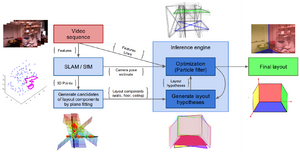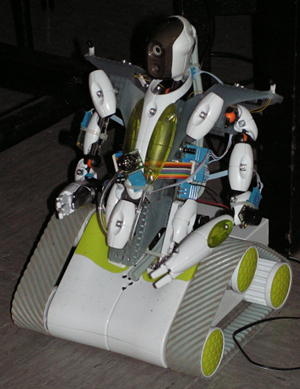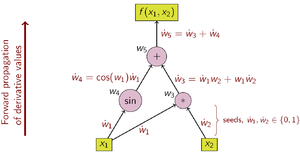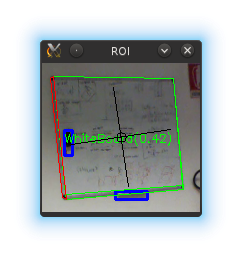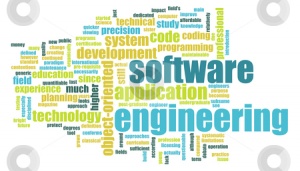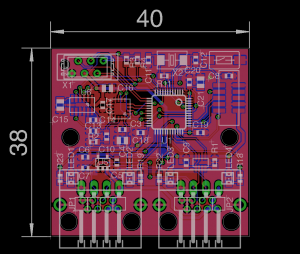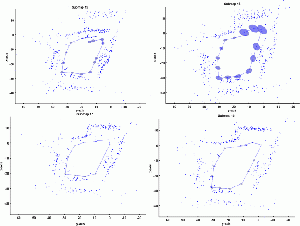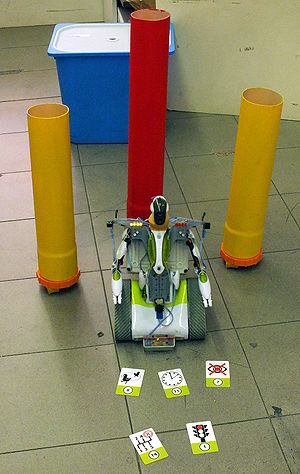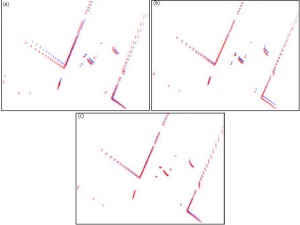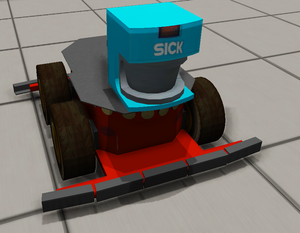Semantic search
| Wiki Page: | 3D Scene Understanding | |
| Title: | 3D Indoor scene understanding and layout reconstruction for a mobile robot in collaboration with UnimiB | |
| Description: | The proposed project aims to reconstruct the 3D structural layout of an indoor environment perceived by a mobile robot. From the sensorial data, the robot should be able to reconstruct a geometrical structure of an indoor environment (e.g., an office).
Methods for indoor layout reconstruction must be significantly more tolerant to missing data than their outdoor counterparts, since environments such as offices and apartments exhibit extremely high levels of clutter, which typically results in heavy occlusions of walls and other structures of interest, large-scale artifacts, noise and missing data. The proposed work will be developed in collaboration with IRALAB, the Robotics Lab of University of Milano Bicocca. The work will be based on an existing project, Free Your Camera (http://www.ira.disco.unimib.it/research/robotic-perception-research/free-your-camera-3d-indoor-scene-understanding-from-arbitrary-camera-motion/) and will be part of a robotic framework based on with ROS and in development at IRALAB. | |
| Tutor: | [[FrancescoAmigoni | ]] (, , , , , , , , , , , , , , , , , , … further resultswarning.png
| |
| Start: | 1 February 2015 | |
| Students: | 1 - 2 | |
| CFU: | 10 - 20 | |
| Research Area: | Robotics | |
| Research Topic: | Robotics |
| Wiki Page: | Autistic Children Play Robot | |
| Title: | Autistic Children Play Robot | |
| Description: | Within a Polisocial project we will have to implement a robot suitable to play autonomously with autistic children that will interact with it and a game system by gestures.
The thesis will explore some of the aspects of the problem, eventually participating to the production of prototypes to be tested with real users. The thesis gives the possibility to develop a robot with special requirements, and to work with gesture interpretation by using devices such as Kinect or the WII Mote. The work is done in an interdisciplinary group including care givers and designers. | |
| Tutor: | [[AndreaBonarini | ]] (, , , , , , , , , , , , , , , , , , … further resultswarning.png
| |
| Start: | 20 January 2015 | |
| Students: | 1 - 2 | |
| CFU: | 20 - 20 | |
| Research Area: | Robotics | |
| Research Topic: | Robogames |
| Wiki Page: | Automatic Differentiation Techniques for Real Time Kalman Filtering | |
| Title: | Evaluation of Automatic Differentiation Techniques for Gauss-Newton based Simultaneous Localization and Mapping | |
| Description: | In Gauss-Newton non linear optimization one of the most tedious part is computing Jacobians. At the AIRLab we have developed a framework for non linear Simultaneous Localization and Mapping suitable for different motion models and measurement equations, but any time you need to change something you need to recompute the required Jacobian. Automatic differentiation is a tool for the automatic differentiation of source code either at compiling time or at runtime; we are interested in testing these techniques in the software we have developed and compare their performance with respect to (cumbersome) optimized computation.
Material
Expected outcome: New modules implementations based on automatic differentiation A comparison between the old stuff and new approach Required skills or skills to be acquired:
| |
| Tutor: | [[MatteoMatteucci | ]] (, , , , , , , , , , , , , , , , , , … further resultswarning.png
| |
| Start: | 1 January 2015 | |
| Students: | 1 - 2 | |
| CFU: | 10 - 20 | |
| Research Area: | Robotics | |
| Research Topic: | None |
| Wiki Page: | Barking Robots | |
| Title: | Barking Robots | |
| Description: | Aim of this project is the development of a robot that can operate autonomously at exhibitions and malls to attract people to a given location, by showing interesting behaviors and interacting with people.
The robot first exhibition has been at Robotica 2009, within HI-Tech Expo at Fiera di Milano, on November 23-25, 2009. Here, the robot had to go around in an area delimited by a white stripe and contact verbally and with gestures people entering the area, in order to attract them to the booth. Behaviors and gestures have still to be developed to come to an interesting and robust demo at next Robotica, or at other ehibits (e.g. at the Museo della Scienza of Milan). | |
| Tutor: | [[AndreaBonarini | ]] (, , , , , , , , , , , , , , , , , , … further resultswarning.png
| |
| Start: | 25 February 2012 | |
| Students: | 1 - 2 | |
| CFU: | 5 - 20 | |
| Research Area: | Robotics | |
| Research Topic: | Robot development |
| Wiki Page: | BringMeHome | |
| Title: | BringMeHome | |
| Description: | ||
| Tutor: | [[AndreaBonarini | ]] (, , , , , , , , , , , , , , , , , , … further resultswarning.png
| |
| Start: | 30 March 2013 | |
| Students: | 1 - 2 | |
| CFU: | 2 - 20 | |
| Research Area: | Robotics | |
| Research Topic: | E-2? - A robot for exhibitions |
| Wiki Page: | Cognitive SLAM | |
| Title: | Cognitive SLAM | |
| Description: | We have developed a system that is able to detect, recognize and track objects in an image taken from a low cost robot equipped with a IMU and a low cost camera. The system is capable to detect and recognize objects using a user defined fuzzy tree classifier. However the system performance is heavily dependent on high level feature extraction, such as geometric features. The problem is non trivial due to noisy low cost camera and changes in the light conditions. The aim of this project is to improve the feature extraction and description process, both in performance and quality, possible adding a more complete description or others type of features. The long term aim of the research is to have an autonomuos robot capable to create a semantic map of the envirorment, localize himself , make inference on the map, navigate into the envirorment using the objects as landmarks.
No special skills are required, except basic c and object oriented programming. | |
| Tutor: | [[AndreaBonarini | ]] (, , , , , , , , , , , , , , , , , , … further resultswarning.png
| |
| Start: | 1 January 2015 | |
| Students: | 1 - 2 | |
| CFU: | 5 - 20 | |
| Research Area: | Robotics | |
| Research Topic: | SLAM, Feature Extraction |
| Wiki Page: | Designing Living Objects | |
| Title: | Designing Living Objects | |
| Description: | The aim of this activity is to investigate how one or more objects in an antropic environment (home, office, hospital) can be designed and implemented to have a character and to move, having nice interactions with people. The work to be done concerns the analysis, definition, design and implementation of at least one of these objects. | |
| Tutor: | [[AndreaBonarini | ]] (, , , , , , , , , , , , , , , , , , … further resultswarning.png
| |
| Start: | 15 October 2017 | |
| Students: | 1 - 2 | |
| CFU: | 5 - 20 | |
| Research Area: | Robotics | |
| Research Topic: | Living Objects |
| Wiki Page: | Extended Kalman Filtering on Manifolds | |
| Title: | Extended Kalman Filtering on Manifolds | |
| Description: | Extended Kalman filtering is a well known technique for the estimation of the state of a dynamical system also used in robotics for localization and mapping. However in the basic formulation it assumes all variables to live in an Euclidean space while some components may span over the non-Euclidean 2D or 3D rotation group SO(2) or SO(3). It is thus possible to write tha Extended Kalman filter to operate on Lie Groups to take into account the presence of manifolds (http://www.ethaneade.org/latex2html/lie/lie.html). We are interestend in investigation this further applying it to the EKF-SLAM framework we have developed.
Material:
Expected outcome:
Required skills or skills to be acquired:
| |
| Tutor: | [[MatteoMatteucci | ]] (, , , , , , , , , , , , , , , , , , … further resultswarning.png
| |
| Start: | 1 April 2012 | |
| Students: | 1 - 2 | |
| CFU: | 20 - 20 | |
| Research Area: | Robotics | |
| Research Topic: | None |
| Wiki Page: | LCM middleware on embedded platform | |
| Title: | LCM middleware on embedded platform | |
| Description: | We are developing a framework for rapid prototyping of low-cost robotic systems. To fasten robot design and building, and to make software and hardware reuse easier, a modular architecture is mandatory.
In a context of smart modules that have to cooperate by exchanging data to reach their common goal, the communication protocol and middleware are core components. This project is about the middleware component, a publish/subscribe system that takes care of managing topics, publisher and subscribers, and of marshaling data before sending it. This project aims at porting the LCM marshaling and middleware library, developed at MIT and used in the Grand Challenge competition, to embedded systems, in order to exploit the existing LCM tools and to be compliant with an existing and efficient technology. The project consists in:
The projects has to be developed in ANSI C, and experience with embedded platforms is a plus. | |
| Tutor: | [[AndreaBonarini | ]] (, , , , , , , , , , , , , , , , , , … further resultswarning.png
| |
| Start: | 1 October 2011 | |
| Students: | 1 - 2 | |
| CFU: | 20 - 20 | |
| Research Area: | Robotics | |
| Research Topic: | Robot development |
| Wiki Page: | MoonSLAM Reengineering | |
| Title: | Reengineering of a flexible framework for simultaneous localization and mapping | |
| Description: | In the last three years a general framework for the implementation of EKF-SLAM algorithm has been developed at the AIRLab. After several improvements it is now time to redesign it based on the experience cumulated. The goal is to have an international reference framework for the development of EKF based SLAM algorithms with multiple sensors (e.g., lasers, odometers, inertial measurement ) and different motion models (e.g., free 6DoF motion, planar motion, ackerman kinematic, and do on). The basic idea is to implement it by using C++ templates, numerically stable techniques for Kalman filtering and investigation the use of automatic differentiation. It should be possible to seamlessly exchange motion model and sensor model without having to write code beside the motion model and the measurement equation.
Material
Expected outcome:
Required skills:
| |
| Tutor: | [[MatteoMatteucci | ]] (, , , , , , , , , , , , , , , , , , … further resultswarning.png
| |
| Start: | 1 January 2015 | |
| Students: | 1 - 2 | |
| CFU: | 20 - 20 | |
| Research Area: | Robotics | |
| Research Topic: | None |
| Wiki Page: | Odometric system for robots based on laser mice | |
| Title: | Odometric system for robots based on laser mice | |
| Description: | We developed an odometric system for robots by combining the reading of several laser mice. The system consists of a master PIC-based board and several slave boards where the sensors employed in optical mice are located. The readings are collected on the PIC and sent on the serial port to a PC which elaborates and combines the x and y readings in order to obtain a x,y,theta estimation of the movement of the robot.
The aim of the project is first to improve the current design of the PIC-based board, and realize a new working prototype, and then to implement and evaluate different algorithms able to estimate more precisely the x,y and theta odometric data from the mice readings. Experience with PIC-based systems and some experience with electronics circuits is a plus. Students are supposed to redesign the electronic board, improve the firmware of the PIC, and work on the algorithm that estimates the robot position on the PC. It would be also interesting to evaluate the possibility to embed the optimization and estimation algorithms in the firmware of the PIC in order to produce a stand-alone device. Ask the tutors of the project for extra material, such as data-sheets and other documentation. | |
| Tutor: | [[MatteoMatteucci | ]] (, , , , , , , , , , , , , , , , , , … further resultswarning.png
| |
| Start: | 1 October 2009 | |
| Students: | 1 - 2 | |
| CFU: | 5 - 20 | |
| Research Area: | Robotics | |
| Research Topic: | Robot development |
| Wiki Page: | R2P IMU firmware development | |
| Title: | Embedded Inertial Measurement Unit for Unmanned Aerial Vehihcles | |
| Description: | We have developed the electronics of an Inertial Measurement Unit based on an ARM microcontroller to be integrated on an autonomous embedded aerial platform. The IMU has already some attitude heading reference system (AHRS) code implemented, but we are interested in:
Material
Expected outcome:
Required skills or skills to be acquired:
| |
| Tutor: | [[AndreaBonarini | ]] (, , , , , , , , , , , , , , , , , , … further resultswarning.png
| |
| Start: | 1 January 2015 | |
| Students: | 1 - 2 | |
| CFU: | 2 - 20 | |
| Research Area: | Robotics | |
| Research Topic: | Robot development |
| Wiki Page: | ROS navigation local planner | |
| Title: | ROS_navigation_local_planner | |
| Description: | The project will be focused on the implementation of a planner and tracking algorithms for Ackermann vehicles | |
| Tutor: | {{EmailViz|1=[[:User:MatteoMatteucci}}, MatteoMatteucci (), [[]] | ]] (, , , , , , , , , , , , , , , , , , … further resultswarning.png
| |
| Start: | October 2017 | |
| Students: | 1 - 3 | |
| CFU: | 2 - 20 | |
| Research Area: | Robotics | |
| Research Topic: | Local Planner |
| Wiki Page: | Robocentric MoonSLAM | |
| Title: | Robocentric implementation in the MoonSLAM framework | |
| Description: | Simultaneous Localization and Mapping (SLAM) is one of the basic functionalities required from an autonomous robot. In the past we have developed a framework for building SLAM algorithm based on the use of the Extended Kalman Filter and vision sensors. The actual implementation of the EKF SLAM in the framework developed uses a world-centric approach, but from the literature it is known that a robocentric approach can provide higher performances on small maps. We would like to have both implementation to compare the results in two scenarios: pure visual odometry, conditional independent submapping.
Material
Expected outcome:
Required skills or skills to be acquired:
| |
| Tutor: | [[MatteoMatteucci | ]] (, , , , , , , , , , , , , , , , , , … further resultswarning.png
| |
| Start: | 1 April 2012 | |
| Students: | 1 - 2 | |
| CFU: | 20 - 20 | |
| Research Area: | Robotics | |
| Research Topic: | None |
| Wiki Page: | Robot Games | |
| Title: | Robot Games | |
| Description: | Projects may include the design of an interactive game on an existing or a new robot, and its evaluation. These projects allow to experiment with real mobile robots and interaction devices. Some games may be designed for disabled children. The project can be considered a MS thesis if it can produce a new game and, possibly, a new robot, and includes adapting the behavior of the robot to the player. | |
| Tutor: | [[AndreaBonarini | ]] (, , , , , , , , , , , , , , , , , , … further resultswarning.png
| |
| Start: | ||
| Students: | 1 - 2 | |
| CFU: | 2 - 20 | |
| Research Area: | Robotics | |
| Research Topic: | Robogames |
| Wiki Page: | Scan Matching Odometry and Multisensor SLAM | |
| Title: | Scan Matching Odometry and Multisensor SLAM | |
| Description: | Starting from some C/C++ code for laser scan alignment and the covariance information associated to the matching, we are interested in the development of a library for the matching and fusion of laser scans under the ROS (www.ros.org) environment. From this we are interested in the development of an odometric system based on laser scan matching and in a Simultaneous Localization and Mapping system integrating scan matching with visual SLAM. The result is a complete navigation system that fuses laser and visual information to build consisten maps in an EKF-based environment.
Material:
Expected outcome:
Required skills or skills to be acquired:
| |
| Tutor: | [[MatteoMatteucci | ]] (, , , , , , , , , , , , , , , , , , … further resultswarning.png
| |
| Start: | 1 April 2012 | |
| Students: | 1 - 2 | |
| CFU: | 10 - 20 | |
| Research Area: | Robotics | |
| Research Topic: | None |
| Wiki Page: | Self calibration of multiple odometric sensors | |
| Title: | Self calibration of multiple odometric sensors mounted on the same platform | |
| Description: | An odometric sensor measures the path followed by a robot in an incremental way (e.g., wheel mounted encoders, visual odometry, scan matching based odometry, etc.) . Having several odometry sensors mounted on the same platform can significantly improve the accuracy and robustness of the overall system but requires proper calibration of relative positioning and possible biases. We are interested in the development of techniques for the self calibration of a multi sensor based odometry sensor. These techniques could be inspired by classical non-linear optimization techniques used in the hand and eye problem but they could use techniques from Simultaneous Localization and Mapping. According to the setup, some information on the real position of the system may exists (i.e., external tracking system or GPS); the approach should be able to use this information as well.
Material:
Expected outcome:
Required skills or skills to be acquired:
| |
| Tutor: | [[MatteoMatteucci | ]] (, , , , , , , , , , , , , , , , , , … further resultswarning.png
| |
| Start: | 1 April 2012 | |
| Students: | 1 - 2 | |
| CFU: | 20 - 20 | |
| Research Area: | Robotics | |
| Research Topic: | None |
| Wiki Page: | Simulation in robotics using UDK USARSIM | |
| Title: | Simulation_in_robotics_using_UDK_USARSIM | |
| Description: | USARSim (Unified System for Automation and Robot Simulation) is a high-fidelity simulation of robots and environments based on UDK (Unreal Development Kit), the free edition of the Unreal Engine 3 game engine. It is intended as a research tool and is the basis for the RoboCup Rescue Virtual Robot Competition.
The proposed project is aimed at extending USARSim along two directions:
Results will be included in the USARSim project and used by the RoboCup community. | |
| Tutor: | [[FrancescoAmigoni | ]] (, , , , , , , , , , , , , , , , , , … further resultswarning.png
| |
| Start: | 1 April 2014 | |
| Students: | 1 - 2 | |
| CFU: | 10 - 20 | |
| Research Area: | Robotics | |
| Research Topic: | RoboCup Rescue |
| Wiki Page: | Soccer Robots | |
| Title: | Soccer Robots | |
| Description: | Projects are available in different areas:
The project can be turned into a thesis by facing different problems in depth. | |
| Tutor: | [[MarcelloRestelli | ]] (, , , , , , , , , , , , , , , , , , … further resultswarning.png
| |
| Start: | 1 January 2009 | |
| Students: | 1 - 2 | |
| CFU: | 5 - 20 | |
| Research Area: | Robotics | |
| Research Topic: | Robot development |
| Wiki Page: | Stability and motion control of a balancing robot | |
| Title: | Stability and motion control of a balancing robot | |
| Description: | This project is focused on the control of both stability and motion of TiltOne, a balancing robot.
TiltOne is a robot with only two wheels that can stand in vertical position following an unstable equilibrium point. The control is applied by commanding an amount of torque to the wheels, allowing the robot to mantain it's gravity center vertical aligned to the wheel axis. The aim of the project proposal is to implement and compare different control solutions, based on classical approach (as PID and LQR control) and Machine Learning approach (as Reinforcement Learning control policies), that allow the robot to move following a given trajectory at a given speed. | |
| Tutor: | [[AndreaBonarini | ]] (, , , , , , , , , , , , , , , , , , … further resultswarning.png
| |
| Start: | 1 March 2010 | |
| Students: | 1 - 2 | |
| CFU: | 5 - 20 | |
| Research Area: | Robotics | |
| Research Topic: | Robot development |
